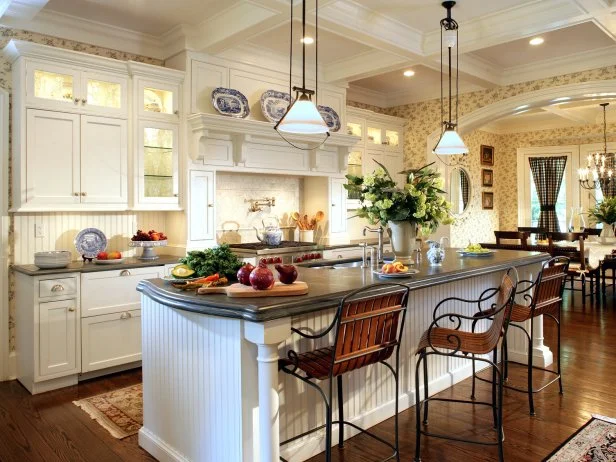Change Any Kind Of Kitchen Space with Stunning Legs For Kitchen Island Choices
Change Any Kind Of Kitchen Space with Stunning Legs For Kitchen Island Choices
Blog Article
A Guide to Picking the Perfect Legs For Cooking Area Island for Your Home
Picking the excellent legs for your cooking area island is a nuanced decision that impacts both the functionality and visual charm of this main area. As you think about these components, it comes to be noticeable that the ideal legs can change not just the look of your kitchen but also its functionality for years to come.

Comprehending Cooking Area Island Legs
When choosing legs for a kitchen island, it's vital to comprehend their useful and aesthetic duties in the overall design. The legs offer as an important support group, guaranteeing stability and resilience for the island, which usually functions as a workspace, dining location, or gathering place. Consequently, the option of material and building and construction strategy need to be durable enough to endure everyday usage and possible wear.
In addition to their structural duties, legs contribute significantly to the island's visual appeal. They can improve the kitchen's design, whether with conventional, contemporary, or eclectic styles. The elevation and proportion of the legs are likewise critical factors to consider; they should balance with the island's counter top elevation while guaranteeing comfortable seating for those making use of the space.
Moreover, the leg style can influence the total circulation of the cooking area. Open, airy leg styles can develop a sense of agility, while solid, substantial legs may communicate a much more based and steady visual - Legs For Kitchen Island. Understanding these functional and aesthetic elements will certainly assist property owners in making notified options that match their cooking area's layout and boost its use
Popular Styles and Products
The option of legs for a kitchen island encompasses a variety of popular styles and materials, each offering one-of-a-kind characteristics that can enhance both performance and looks. Conventional legs typically show ornate details and workmanship, boosting classic cooking area designs.

Height and Stability Factors To Consider

The legs of the cooking area island must provide appropriate assistance, making sure that the framework can hold up against daily usage without changing or wobbling. Product option plays a considerable duty in security; metal legs, for circumstances, often tend to use greater toughness contrasted to wood.
Matching Your Kitchen Area Visual
Choosing the right legs for your kitchen area island surpasses capability; it likewise plays a significant duty in the total aesthetic of the space. When choosing legs, consider the layout style of your kitchen area. For a modern appearance, smooth metal or minimalist styles can produce a tidy, contemporary vibe. On the various other hand, rustic or traditional kitchen areas commonly profit from wood legs with detailed describing click here now or a distressed finish, improving heat and character.
Color is another crucial element. Legs that match or contrast with your island's surface and surrounding kitchen cabinetry can develop visual harmony or striking centerpieces. Coupling dark timber legs with a light marble counter top can add depth and passion. In addition, take into consideration the surface of the legs; matte, shiny, or textured surfaces can significantly influence the general feel of the kitchen area.
Installation and Maintenance Tips
Mounting cooking area island legs calls for careful focus to information to make sure both security and visual appeal. Begin by selecting an appropriate place for your island, guaranteeing it is level and has ample room for activity. If you are affixing the legs to a wall or making use of brackets for added assistance, make use of a stud finder to find wall studs. Mark the placement of the legs properly before exploration.
When securing the legs, make use of high-quality screws and, if essential, wood glue for extra strength. For metal legs, make certain click over here that you are using ideal supports and devices to avoid damages to your flooring. It is advisable to inspect for levelness after installation, making modifications as needed to prevent wobbling.
Upkeep is just as essential for longevity - Legs For Kitchen Island. On a regular basis check the legs for any kind of signs of wear or helping to loosen, specifically in high-traffic locations. Tidy the legs with an appropriate cleaner, avoiding unpleasant materials that might damage the surface. For wooden legs, take into consideration using a timber conditioner periodically to keep their finish. By adhering to these setup and upkeep tips, you can make certain that your kitchen island legs stay both aesthetically enticing and useful.
Conclusion
Finally, choosing the suitable legs for a kitchen area island necessitates cautious consideration of height, security, and aesthetic compatibility. By choosing suitable materials and designs that straighten with the general kitchen area layout, performance can be boosted while keeping aesthetic appeal. Correct installment and ongoing maintenance further contribute to the toughness and long life of the cooking area island. Ultimately, thoughtful leg option plays a critical function in boosting both the functionality and design of the kitchen area space.
When choosing legs for a kitchen island, it's essential to understand their practical and aesthetic functions in the general layout. Open, airy leg designs can develop a feeling of lightness, while solid, substantial legs may communicate a much more grounded and steady visual. The legs of the kitchen island need to provide appropriate support, guaranteeing that the structure can hold up against day-to-day use without moving or tottering.Mounting kitchen area island legs requires mindful interest to detail to make certain both security and visual allure.In final thought, selecting the proper legs for a kitchen island requires cautious factor to consider of elevation, stability, and aesthetic compatibility.
Report this page